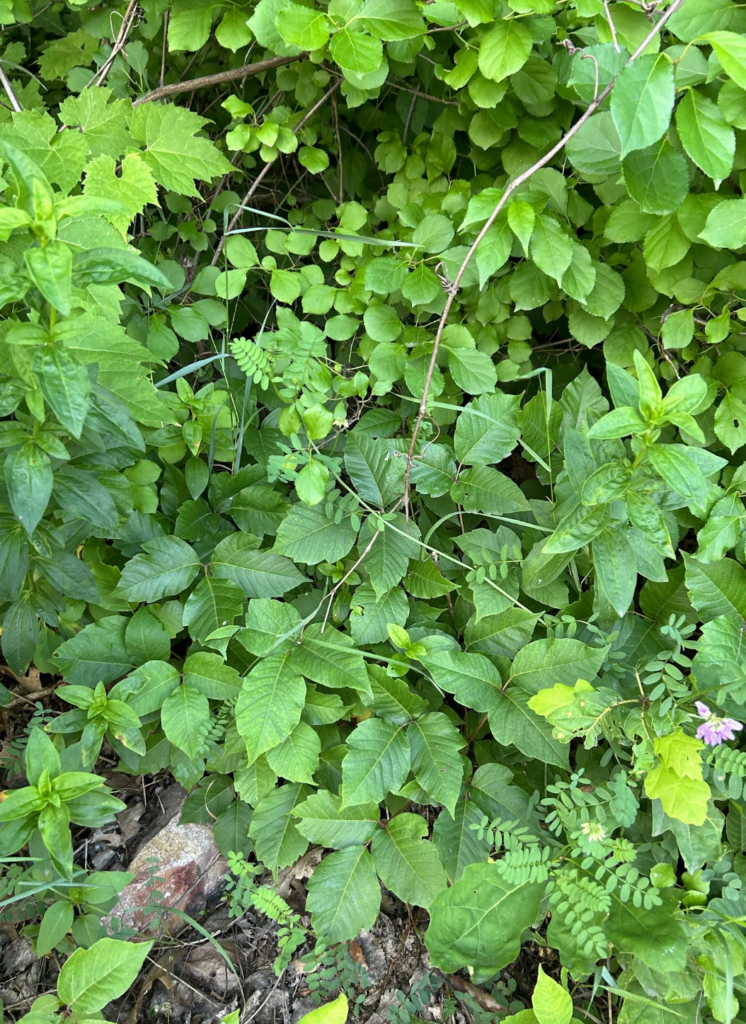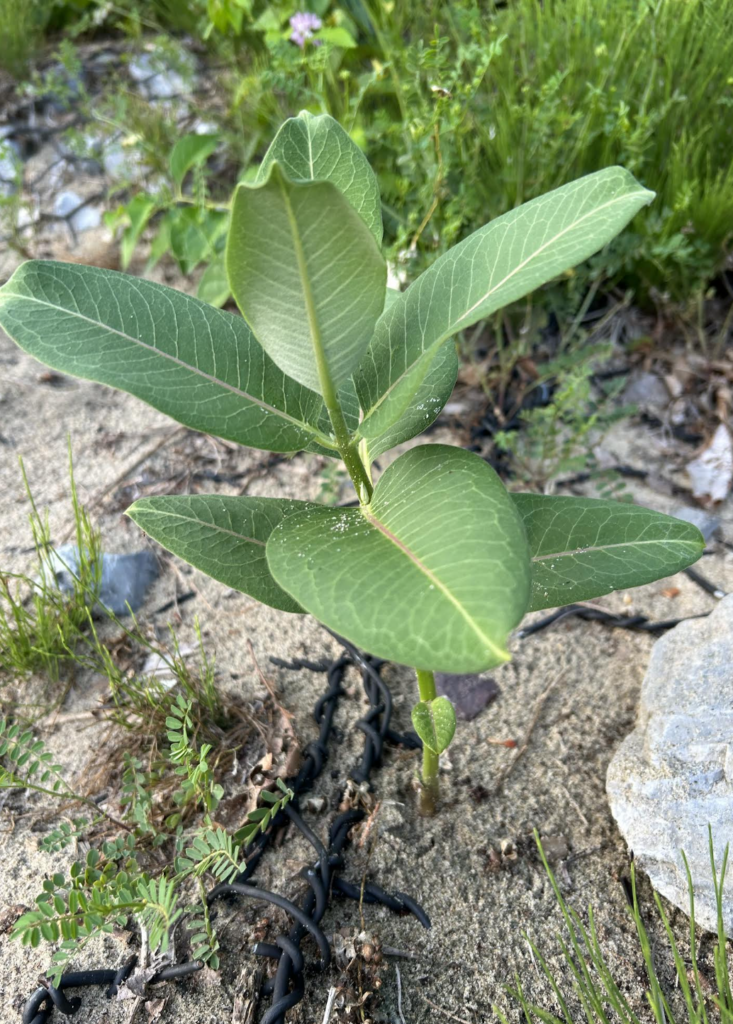On June 29, the weather at Leddy Beach showed a slightly cloudy sky with intermittent sunshine. This climatic condition can have an impact on a variety of beach-related activities as well as human behavior. To begin with, clouds provide pleasant relief from direct sunlight, lowering the risk of sunburn and heat-related discomfort. Furthermore, the temperate temperature and soft breeze create a pleasant setting for people participating in recreational activities. The fewer people on the beach before dusk could be attributed to several variables, including the time of day and partly cloudy conditions. Further research into beach attendance patterns and weather preferences could provide essential insights into the relationship between weather and human behavior.
Exploration and examination of a site frequently reveal hidden characteristics that were previously ignored. On a return visit to Leddy Beach on June 29, a thorough inspection along the tree line revealed a considerable amount of poison ivy. This discovery has ecological and human health consequences that require additional investigation and attention. Poison ivy (Toxicodendron radicans) is a widespread plant species noted for its potential to cause allergic reactions in humans when its urushiol oil comes into contact with them. The previously unnoticed tree line suddenly shows a thick population of poison ivy plants. This discovery emphasizes the significance of thoroughly examining the site’s ecological composition. From an ecological standpoint, the spread of poison ivy in this location may have ecological effects. Poison ivy contributes to the ecosystem by providing food and habitat for various creatures, including birds and small mammals. However, its rapid development can outcompete other plant species, altering plant communities’ composition and threatening biodiversity. On the other side, the presence of poison ivy provides concern to visitors to Leddy Beach in terms of human health. Contact with the poison ivy leaves stems, or roots can cause allergic reactions such as skin rashes, blisters, and itching. As a result, it is critical to educate beachgoers about the probable existence of poison ivy and how to identify and prevent contact with this plant. Finally, on June 29, a comprehensive study of the tree line at Leddy Beach revealed an abundance of poison ivy. This study highlights the importance of conducting complete site evaluations to understand the ecological dynamics and potential dangers connected with specific plant species. Furthermore, it emphasizes the significance of informing people about the presence of dangerous plants to protect their safety and well-being while participating in outdoor activities.
During my exploration at Leddy Beach, I came to find a new species to me: the Basswood tree. I used internet field guides to help me identify the tree after taking notes and sketching its distinguishing traits. Basswood is a common name for a variety of woods.
Tilia americana (scientific name)
Identification Method: Using internet field guides, I compared the attributes of the tree I observed to descriptions and photographs of several tree species. The vast, heart-shaped leaves with serrated edges and asymmetrical leaf bases of the Basswood tree stood out.
Fun Fact: One piece of information about the Basswood tree that I learned is its historical relevance to Indigenous societies and early European settlers. The Native Americans appreciated the tree’s versatility; the inner bark fibers were used to make ropes, mats, and baskets, while the wood was used to make canoes, utensils, and carvings. Furthermore, the blossoms of the Basswood tree attract a variety of pollinators, including bees, who create high-quality, mild-flavored honey known as “basswood honey.”

- Because of its appealing color and distinctive plant structure, I sketched Asclepias syriaca, sometimes known as common milkweed. Common milkweed is a herbaceous perennial plant native to North America. It is characterized by tall, straight stems with wide, broad leaves and clusters of fragrant pink to purple blooms. The plant’s characteristic milky sap and the presence of ornate, pod-like fruits make it an appealing subject for botanical art. I wanted to portray the common milkweed’s visual appeal and biological traits in my sketch, highlighting its aesthetic merits and ecological relevance.
- Vitis riparia, often known as riverbank grape, was chosen for my botanical sketch because of its unique growth behavior of twining and wrapping around trees. The riverbank grape is a native North American woody vine with heart-shaped leaves and small, purple-black grapes clusters. In my sketch, I wanted to portray the complicated and dynamic interplay between the riverside grape and its supporting tree, highlighting the plant’s ecological role as a climber and its possible repercussions on the host tree’s growth and structure.
- Because of its prominence along the tree line, I sketched Toxicodendron radicans, sometimes known as poison ivy. Poison ivy is a natural plant species renowned for its three-leaf arrangement and the potential allergic reactions caused by its urushiol oil. I sought to portray the quantity of poison ivy along the treeline in my sketch, emphasizing its biological distribution and the need to understand its possible health concerns for visitors and the surrounding ecology.
- I selected to draw Asclepias syriaca, sometimes known as common milkweed, to investigate its different appearance without flowers, which I had not realized was the same plant. Common milkweed is a North American perennial herbaceous species with long stems, broad leaves, and fragrant pink to purple flower clusters. My sketch aims to highlight the distinctive aspects of common milkweed, offer insight into its changing look during its life cycle, and broaden my awareness of its botanical qualities.








I had a lot of fun sketching flora at Leddy Beach in Vermont for my blog entry. It helped me to reconnect with nature and learn more about the local flora. Sketching helped me focus and gave me a calming experience. The difficulty was obtaining proper proportions while dealing with changing lighting. Next time, I want to improve my plant identification skills to draw more accurately. Overall, it was a worthwhile experience.